- News
- Reviews
- Bikes
- Accessories
- Accessories - misc
- Computer mounts
- Bags
- Bar ends
- Bike bags & cases
- Bottle cages
- Bottles
- Cameras
- Car racks
- Child seats
- Computers
- Glasses
- GPS units
- Helmets
- Lights - front
- Lights - rear
- Lights - sets
- Locks
- Mirrors
- Mudguards
- Racks
- Pumps & CO2 inflators
- Puncture kits
- Reflectives
- Smart watches
- Stands and racks
- Trailers
- Clothing
- Components
- Bar tape & grips
- Bottom brackets
- Brake & gear cables
- Brake & STI levers
- Brake pads & spares
- Brakes
- Cassettes & freewheels
- Chains
- Chainsets & chainrings
- Derailleurs - front
- Derailleurs - rear
- Forks
- Gear levers & shifters
- Groupsets
- Handlebars & extensions
- Headsets
- Hubs
- Inner tubes
- Pedals
- Quick releases & skewers
- Saddles
- Seatposts
- Stems
- Wheels
- Tyres
- Health, fitness and nutrition
- Tools and workshop
- Miscellaneous
- Buyers Guides
- Features
- Forum
- Recommends
- Podcast
feature
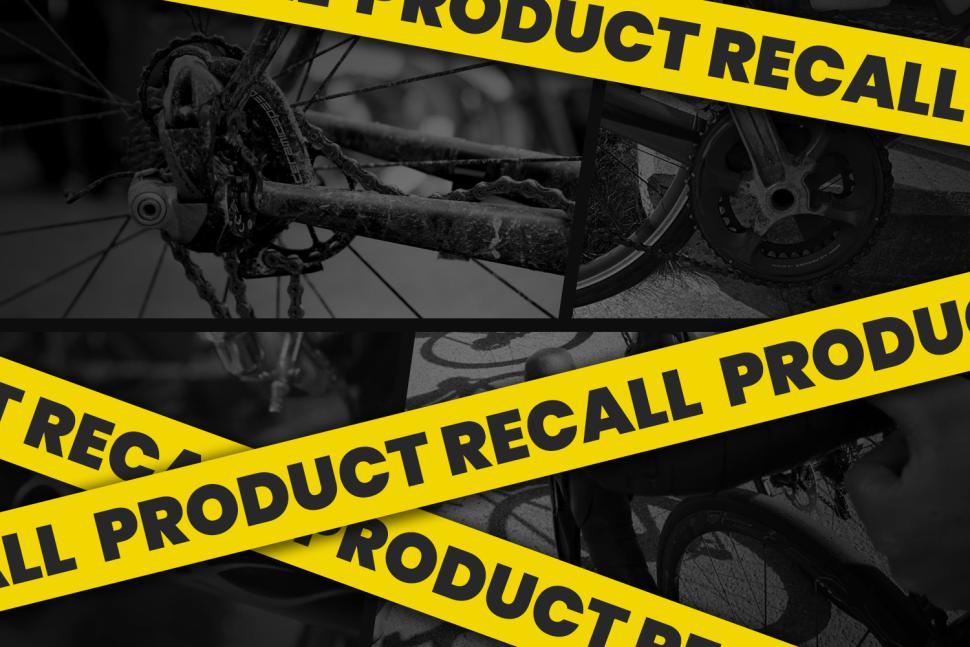 Product Recall Jan 2024
Product Recall Jan 2024How does a product recall work in the bike industry?
Product recalls are common across most industries and the bike industry is no exception, with one of the biggest product recalls (or 'inspection and replacement program' outside of the US) in cycling history beginning last year with Shimano's widely-used Hollowtech cranksets. The primary goals of a product recall are to maintain industry standards, promote transparency, and most importantly, ensure consumer safety. So, why do they matter, and are they avoidable? We asked some bike industry experts who have experienced big product recalls to get the ins and outs.
The world of cycling is constantly advancing, and customers expect cutting-edge products. However, even with rigorous testing, some products don't work as they were expected to. In some cases it becomes necessary to recall these products, but what exactly does this mean?
Product recalls: the basics
If a product is deemed unsafe or defective, a product recall occurs, with the manufacturer or regulatory body calling for its removal from the market to prevent or mitigate potential harm to consumers.
There are no small recalls, and a full product recall signifies a severe safety concern warranting a complete halt in sales and riding activities.
This process often involves communication with consumers, retailers and regulatory authorities to determine the strategies for replacement, repair or refund of the affected products.
Contrastingly, not all significant interventions are termed recalls. In 2017, Cannondale addressed concerns with their Lefty forks through a 'voluntary upgrade' for models produced between 2014 and 2017. A source involved in the process told road.cc, “I remember we had to bring in every Lefty fork of a certain type/generation for a rebuild to prevent the things falling apart. It wasn’t termed a ‘recall’ per se (avoiding the term) but they had to come back in.
“Forks came in for a ‘voluntary upgrade,’ and the workshop had piles of Lefties to rebuild, and it went on for months. So much Loctite!”
There was also controversy surrounding Shimano's decision to announce a recall of its Hollowtech cranksets in the US but an 'inspection and replacement program' in other territories in 2023, with a specialist solicitor telling the road.cc Podcast that an official recall should have been announced to avoid confusion.
Why do products get recalled?
Product recalls are triggered by various factors, but a recall is normally caused by a safety-related issue, heightening the risk of injury. This may be a result of a design flaw in the product or manufacturing defects occurring during the production process, and manufacturers then have a duty of care to their customers.
Customer feedback is critical for initiating product recalls, as reports from consumers can trigger an investigation to assess any recurring patterns.
Colin Knell, European Customer Care Director at Trek Bicycle, said, “We keep a very close eye on warranty data, that's our first stepping stone effectively.
"If we start to see trends on warranty items going over a particular percentage, that sends alerts to Product Quality Engineers to evaluate if we may see an issue arising. So, it's all about getting really good feedback from consumers and retailers on products that don't work as we expect them to do."
Michel Lethenet, PR Manager at Mavic, also gave us insight into the initiation of product recalls. According to him, recalls are often triggered by "an abnormally high rate of product returns from our after-sale department service statistics" or "a reported injury from a customer", either directly or through their insurance company. This emphasises the importance of a close follow-up on products to ensure customer safety and satisfaction.
How long does a product recall process take?
The timeline for a product recall process varies amongst manufacturers, and depends on factors such as the type of product and its production history. Products must be assessed based on their risk, how many products are out there, and the worst-case scenarios to determine whether a product recall is warranted.
Al Vines, Head of Technical and Customer Service at Upgrade Bikes, says, "Once a recall is underway in the UK, trading standards would be informed and may dictate to the brand what needs to be done."
In Trek's case, before involving the Consumer Product Safety Commission (CPSC), an investigation is conducted internally, aiming to optimise consumer safety while minimising unnecessary disruptions and costs.
Knell says, “Our warranty and non-warranty claim system allows us to review claims every day.
"We share the same system globally. A large majority (99.9%) are resolved without any need for a recall and we are proud of the speed of our service to retailers and consumers."
Since Trek is an American company and works closely with the CPSC, it's the CPSC that issues the notices, which is the part that can take time.
Knell adds, "We present all our data to CPSC if we (or they) feel a safety issue has arisen. That data is supplied by our legal, engineering, design and customer service team and will cover what the issue is, how we designed and manufactured the part, how many parts were delivered to the market and most importantly the chosen resolution with minimal impact to customers.
"Once decided all parties will act with a sense of urgency to have the best customer experience possible.”
A bonus fact is that the CPSC only issues notices on a Thursday. Who knew!
While all product recalls are different, Knell estimates that in the case of a significant safety concern, such as carbon handlebars, the process from deciding they want to recall something to the actual recall typically takes between four and six weeks.
How are consumers notified?
> Specialized Allez Sprint vs Trek Emonda ALR
Official statements are released by manufacturers through their websites, press releases and dedicated recall pages, providing information about the recall, affected products, and recommended actions for consumers.
Trek distributes across 90 countries worldwide, and each region will have their own authority handling the recall locally. Despite differences in laws and jurisdictions, official statements are released at a similar time worldwide and translated into their respective languages.
Knell says, "Even though we announce it first in America, the European Commission has a system called RAPEX (The Rapid Exchange of Information System). So as soon as CPSC announce something, RAPEX gets that notification and then that goes to all local authorities, and it all gets announced roughly the same time".
Trek also has a dedicated section on its website listing all recalls dating back to 1994, enhancing transparency and providing valuable information for consumers. Additionally, the CPSC website features a comprehensive list of product recalls.
How do manufacturers ensure the safety of their products?
Many safety approvals need to be met before a product makes it onto the market.
Vines says, "The important thing is that brands consider rider safety as of absolute paramount importance, ensuring that the product is as a minimum, tested appropriately by the correct independent testing companies [and] passing the relevant safety standards.
"If there is an issue, they act quickly and responsibly to minimise any impact on their customers."
> What makes a Tour de France time trial bike so fast?
As a global company, Trek, for instance, must ensure that each product launched complies with the corresponding local regulations. “All products need to pass local standards, as an example Australia has one of the best standards for helmets," says Knell.
"Before we release any product globally we ensure it passes all the standards in relation to that market”.
Are all recalls created equally?
The short answer is no. Using the CPSC as an example, recalls are assessed based on their risk factor. Components with a direct impact on safety, such as handlebars, pedals, saddles, or anything connected to critical areas of the bike, receive a higher risk approval rating.
This typically results in more urgent and stringent measures being taken in response to a product recall to mitigate potential risks to consumers.
Lethenet provides an example of the first series of the Mavic R-Sys wheelset from 2008, which incorporated low count hollow carbon spokes. He says, "We had to react fast to ensure our customer's safety even though we were missing analysis conclusions."
In response, customers were offered a pair of Aksium replacement wheels. However, upon further investigation, it was determined that the carbon spokes were not faulty. It was found that the issue stemmed from the tyre's bead diameter being too large, leading to derailing from the rim and, in the worst-case scenario, a crash. This shows the challenges involved in identifying the cause of product issues but the importance of proactive measures to prioritise customer safety.
There are two types of product recalls: voluntary and mandatory. Voluntary recalls are typically initiated by the manufacturer or retailer without external regulatory enforcement, typically after discovering a safety issue. For example, Vines shows the proactive nature of voluntary recalls, stating, "Thankfully, all recalls I’ve been involved with... were voluntary and we were erring on the side of caution with no injuries reported."
In contrast, mandatory recalls are enforced by regulatory agencies when a product is deemed to pose a significant risk to customers. External authorities have the power to enforce product removal from the market.
How long after a product is released is it likely to be recalled?
The timeline for product recalls can vary widely and is influenced by numerous factors. There isn't a fixed duration after which products are typically recalled. The decision to recall a product depends on when safety concerns or defects are identified and the level of risk they pose to consumers.
This can be throughout a product's lifecycle and Vines says, "Before my time at Upgrade bikes, a Racelight T Carbon Fork (2003-2009) fitted to one of our bikes was involved in a tragic accident, which triggered a full recall. Thankfully, we have had no more reports of failure, but the recall is still ongoing with the odd fork coming back to us for a swap every now and then".
This highlights the importance of continuous monitoring throughout a product's life as potential issues can still arise after the initial incident.
Knell added that Trek closely monitor products in the first six months and as a result, they explain that a full recall during this time is less likely. Knell says, "If we see early issues we can quickly change design and production techniques to improve the product, and contact the retailers and consumers we supplied product to if required with some corrective actions.”
Of course, there's an argument to suggest public pressure and press attention could trigger recalls; in the case of Shimano's Hollowtech cranksets, reports of failures were going on for many years before the components giant took action.
What are some of the biggest recent recalls in the road bike market?
Product recalls across the cycling industry are not uncommon, however, they don't occur excessively often.
For example, in 2021, owners of the Canyon Aeroad models featuring CP15 and CP18 cockpits were issued a 'stop ride' notice after Mathieu van der Poel broke his handlebar during a race, and in 2022, Scott issued a product recall on their Speedster road and gravel bikes due to faulty forks.
According to Knell, Trek's biggest recall was the QR11 recall of quick releases. "It was 1.7 million bikes affected in 2015 and that was the old design of quick release which opened past 180 degrees", Knell explains.
"It involved all models of Trek bicycles from model years 2000 through 2015 equipped with front disc brakes and a black or silver quick release lever on the front wheel hub that opens far enough to contact the disc brake."
Another significant recall, as previously mentioned, took place in 2008 when Mavic issued a recall for all of its first-generation R-Sys front wheels due to failures under certain conditions. Following a long investigation and as a proactive measure, Mavic offered all affected customers a pair of Aksium replacement wheels.
Shimano's ongoing Hollowtech crank recall and inspection program is thought to affect up to 2.8 million units globally, making it the largest ever in the bike industry by most metrics. The issue with the quick releases on Trek's bikes also affected up to 17 other bike brands using the same QR design, with a further 1.5 million bikes recalled later in 2015.
How is the success of a product recall measured?
The success of a product recall will depend on various factors such as the effectiveness in removing unsafe products, reaching a significant proportion of affected consumers, timely execution and compliance rate.
> Cycling and sustainability: What the bike industry is doing, and what you can do
According to Knell, the success of a product recall is also influenced by the severity of the affected part. He told us that Trek's most successful capture and replacement recovery was with their Speed Concept base bar and RSL handlebar/stem combo recall in 2022 whereby they recalled 18,000 products and had an uptake of 80% globally.
Companies have to report the uptake numbers to the CPSC to encourage the removal of as many of the affected products as possible.
The consequences of a product recall for manufacturers
Product recalls can have significant consequences for manufacturers, primarily significant financial losses. These losses are typically from cash payouts, costs for replacements, reimbursements, equipment expenses and further testing time.
In reference to that huge 2008 Mavic wheel recall, Lethenet says, "The logistics to get all the wheelsets back from all the OE factories and foreign distributors all over the world and change every single hub was massive and expensive."
However, despite the financial loss, the primary concern should be for the safety of consumers and the potential harm they might experience if the defective product remains on the market. We'd like to think so, anyway...
Knell says, "Manufacturers would rather look after their potential consumers in the future and existing customers than just take the risk of supplying poor quality products onto the market”, adding "We’ve got to do the right thing for our customers".
Product recalls can also damage the reputation of a brand, but not recalling a product soon enough or at all can have even more severe consequences. A poignant example is the 2015 incident involving the failure of a Kinesis fork, which tragically led to the death of an Essex cyclist. For manufacturers, such incidents may lead to severe consequences legally, financially and could damage their reputation.
The way a brand manages a product recall significantly influences its reputation. Consumers want transparent communication, a quick response and a dedication to resolving the issue. Rebuilding trust after a recall is often challenging, so the initial response is critical.
So, are recalls avoidable?
Recalls are not entirely avoidable given the demand for cutting-edge products that need to hit the market promptly. Even after rigorous testing, it's impossible to test and replicate thousands of use cases throughout the entire lifespan of a product.
Knell says: “Consumers are always looking for the highest performance and sometimes lightest product to enhance their riding. Sometimes manufacturers remove safety margin in manufacturing processes.
"Even though a product passes all the initial engineering and compliance checks, we may find in real-life use that the design is not as reliable and as safe as we wanted it to be. The most important factor for Trek is that we have high performing products that are also safe for their designed use.”
Vines adds, "Yes and no, but sadly, mainly no!
"In a perfect world, all product, bike related or not, would be tested for years and years in every possible scenario and material and manufacturing defects would never occur due to flawless, ongoing quality control. That is however impossible/incredibly hard (and prohibitively/massively expensive) to achieve, and humans are fallible".
Lethenet summarised, "I do not think so as even with the most finicky quality control procedures and development process, it is impossible to cover 100% of defects and uses during extremely specific conditions that would provoke a failure. Our Mavic Care program exists to find solutions to any problem occurring.
"If you play the innovation card, the risk is higher as you open new “unknown” fields where you don't have any background information/experience."
The perspectives shared by our bike industry insiders highlight the complexities and challenges in delivering cutting-edge and reliable products to consumers balancing innovation, performance and safety.
Cyclists are using their bikes for more and more extreme pursuits, but manufacturers have a duty of care to those customers. Despite the challenges, they need to balance innovation with ensuring products are reliable and safe for consumers.
Have you been involved in any product recalls? Let us know in the comments section below.
Emily is our track and road racing specialist, having represented Great Britain at the World and European Track Championships. With a National Title up her sleeve, Emily has just completed her Master’s in Sports Psychology at Loughborough University where she raced for Elite Development Team, Loughborough Lightning.
Emily is our go-to for all things training and when not riding or racing bikes, you can find her online shopping or booking flights…the rest of the office is now considering painting their nails to see if that’s the secret to going fast…
Latest Comments
- matthewn5 8 min 33 sec ago
An update: Campagnolo recommends Loctite for press-fit BBs: https://www.campagnolo.com/on/demandware.static/-/Library-Sites-campagno...
- ChrisGoddard 8 min 59 sec ago
Hi Dave, I subscribed yesterday but still can't access the game
- OnYerBike 11 min 22 sec ago
Maybe we cannot entirely eliminate fatalities, but that doesn't mean we shouldn't try (that is the goal of "Vision Zero")....
- Andrewbanshee 48 min 22 sec ago
The UK and new infra. Sigh. Optical illusion infra. Sigh. Accident waiting to happen. Sigh....
- Hirsute 1 hour 14 min ago
Good job the telescope was on a massive bollard plinth otherwise a few KSIs. https://www.youtube.com/watch?v=lIqUgFaM26w (first clip)
- Rendel Harris 1 hour 37 min ago
Looks to me as if he's totally understood the spirit of the jersey, judging by that comment.
- brooksby 1 hour 58 min ago
Dear "member of the road.cc staff" - is there any chance you could publish a transcript of this episode? - thanks!
- Freddy56 2 hours 9 min ago
I am a bianchi owner, A lovely Sprint with 105 hydraulic but this has concealed cables on a bike that isn't build for speed?




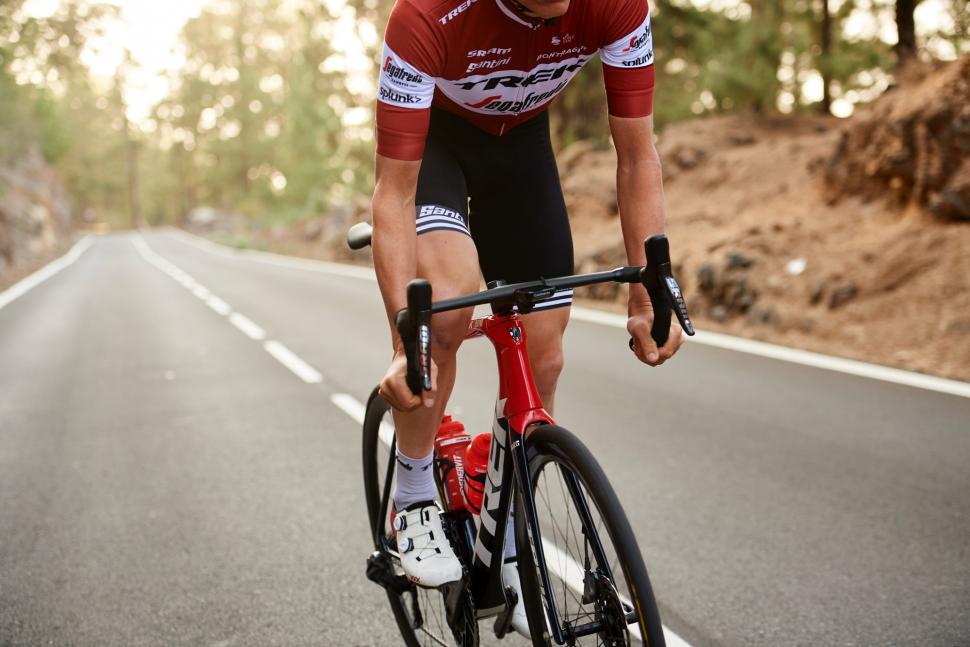





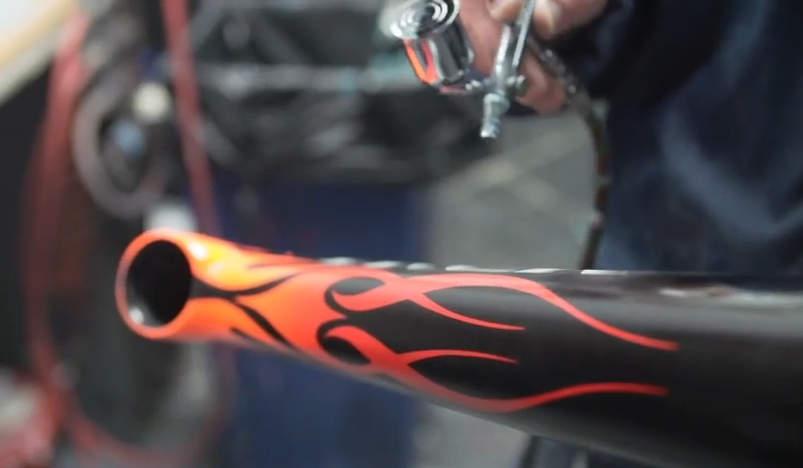





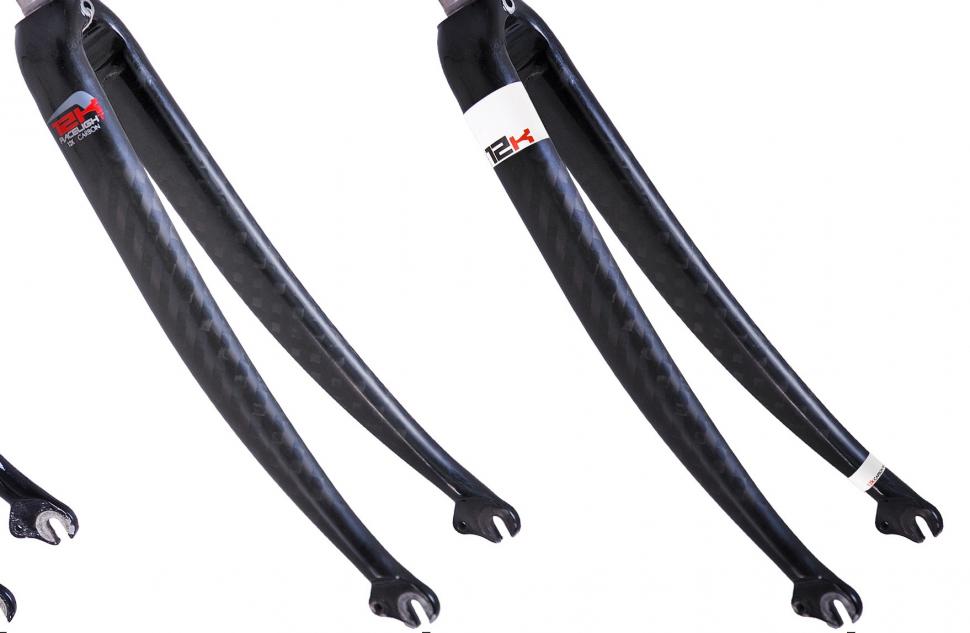
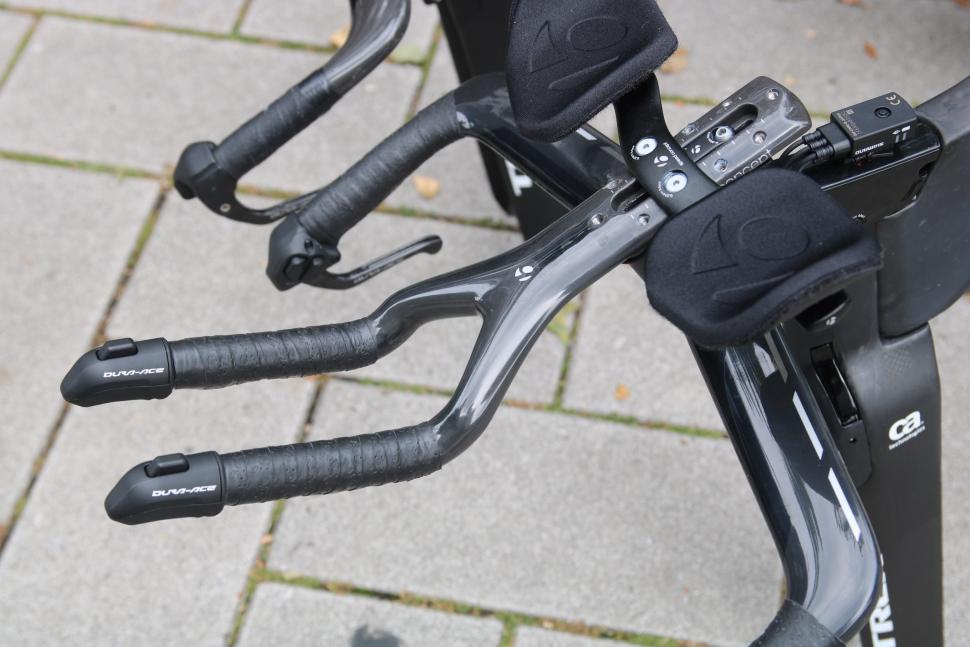
Add new comment
2 comments
I've had two products recalled. Original Specialized Tricross came with cantilever brakes that went into vibration and resonance - replaced with V-brakes. Specialized Roubaix Elite from 2018 just had the Ultegra crankset replaced. In both cases, shops handled the process very well as did Specialized and Shimano. My Orbea Car-Pe is an excellent urban throw-about bike but front brake cable snapped early on, I replaced it with top quality brand. Today, with not what I'd call a lot of use, rear brake cable just frayed to point of almost snapping. Will have to replace tomorrow. Clearly assembledcwith inadequate cables for intended use of the bike
The extent the bike industry goes to avoid the word "recall' is incredible, and it is successful to the benefit of the manufacturer. Particularly when a 3rd party is involved (bike shops and credit card companies) for inspection/remedy/liability.
The Cannondale lefty 2spring "upgrade" mentioned in the article was a joke, with the UK distributor trying to charge customers to "upgrade" their fork to one that operates as it was intended/advertised.
Garmin calls a recall a "SERVICE ADVISORY", and doesn't communicate it to registered owners (in my experience) despite said notice instructing no use of product if symptoms are present due to risk of injury & fatality.
You can only hope Shimano get stung by their seemingly legally naive approach to crankgate so the bike industry might more readily accept and admit that design flaws happen.